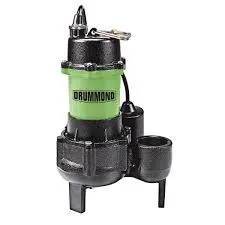Malay
- Afrikaans
- Albanian
- Amharic
- Arabic
- Armenian
- Azerbaijani
- Basque
- Belarusian
- Bengali
- Bosnian
- Bulgarian
- Catalan
- Cebuano
- Corsican
- Croatian
- Czech
- Danish
- Dutch
- English
- Esperanto
- Estonian
- Finnish
- French
- Frisian
- Galician
- Georgian
- German
- Greek
- Gujarati
- Haitian Creole
- hausa
- hawaiian
- Hebrew
- Hindi
- Miao
- Hungarian
- Icelandic
- igbo
- Indonesian
- irish
- Italian
- Japanese
- Javanese
- Kannada
- kazakh
- Khmer
- Rwandese
- Korean
- Kurdish
- Kyrgyz
- Lao
- Latin
- Latvian
- Lithuanian
- Luxembourgish
- Macedonian
- Malgashi
- Malay
- Malayalam
- Maltese
- Maori
- Marathi
- Mongolian
- Myanmar
- Nepali
- Norwegian
- Norwegian
- Occitan
- Pashto
- Persian
- Polish
- Portuguese
- Punjabi
- Romanian
- Russian
- Samoan
- Scottish Gaelic
- Serbian
- Sesotho
- Shona
- Sindhi
- Sinhala
- Slovak
- Slovenian
- Somali
- Spanish
- Sundanese
- Swahili
- Swedish
- Tagalog
- Tajik
- Tamil
- Tatar
- Telugu
- Thai
- Turkish
- Turkmen
- Ukrainian
- Urdu
- Uighur
- Uzbek
- Vietnamese
- Welsh
- Bantu
- Yiddish
- Yoruba
- Zulu
Telephone: +86 13120555503
Email: frank@cypump.com
Dis . 04, 2024 18:13 Back to list
vertical split case pump
Understanding Vertical Split Case Pumps
Vertical split case pumps are an essential component in various industries, ranging from water supply and sewage treatment to HVAC and industrial processes. These pumps are specifically designed for efficient fluid transfer while minimizing energy consumption and maximizing reliability. Unlike traditional horizontal pumps, vertical split case pumps have a unique configuration that allows for easier maintenance and increased operational efficiency.
Design and Structure
At the heart of a vertical split case pump's design is the vertical orientation of its casing. Typically, these pumps consist of two halves that are split vertically, allowing for easy access to vital internal components such as the impeller and mechanical seals. This design not only facilitates maintenance but also helps in achieving a compact footprint, which is advantageous in environments with space constraints.
The vertical configuration offers a number of benefits, including better suction capabilities due to the inherent design that often eliminates the need for additional space for suction lines. This results in a lower risk of cavitation, a phenomenon that can damage the pump and reduce its efficiency. The split case design also enables the pump to handle a wider range of flow conditions and allows for customization to meet specific operational requirements.
Efficiency and Performance
One of the key advantages of vertical split case pumps is their operational efficiency. With a well-designed impeller and casing, these pumps can achieve high hydraulic efficiencies, translating to lower energy consumption. In many cases, they can operate at around 80% efficiency or higher, significantly reducing energy costs, which is critical in industrial applications where long-term operational expenses can be substantial.
In addition to energy efficiency, vertical split case pumps are designed for high reliability. With fewer moving parts than traditional centrifugal pumps, these pumps experience reduced wear and tear, leading to longer service intervals and lower maintenance costs. The ability to split the casing vertically allows technicians to perform inspections and repairs without the need to dismantle the entire pump assembly, thereby minimizing downtime and maintaining productivity.
vertical split case pump

Applications and Industries
Vertical split case pumps are versatile, making them suitable for a wide range of applications. In municipal water systems, these pumps are commonly used for water distribution, ensuring that clean water reaches homes and industries. In the industrial sector, they are often found in cooling water systems, process water supply, and fire suppression systems due to their reliability and efficiency.
Sewage and wastewater treatment facilities also benefit from vertical split case pumps, as they can handle high volumes of fluid with varying levels of solids. Their robust design allows them to operate effectively in challenging environments, ensuring that wastewater is pumped safely and efficiently.
In commercial buildings, these pumps are frequently utilized in HVAC systems, supporting heating and cooling requirements. By maintaining a steady flow of water through the system, they contribute to energy-efficient climate control, improving comfort while cutting energy costs.
Conclusion
Vertical split case pumps represent a significant advancement in pump technology, combining efficiency, reliability, and ease of maintenance. Their unique design allows for greater flexibility in application, making them a preferred choice across various industries. As the demand for energy-efficient and durable pumping solutions continues to grow, vertical split case pumps are poised to play an integral role in meeting these needs.
By understanding the attributes and advantages of vertical split case pumps, industries can better select the appropriate pumping solutions that align with their operational requirements while promoting sustainability and cost-effectiveness. Most importantly, the role these pumps play in facilitating essential services underscores their value in society, ensuring a consistent supply of water and effective waste management in both commercial and industrial settings.
-
Heavy-Duty Mining Sludge Pumps - Wear-Resistant Slurry Handling
NewsAug.02,2025
-
Horizontal Split Case Pump with GPT-4 Turbo | High Efficiency
NewsAug.01,2025
-
ISG Series Pipeline Pump - Chi Yuan Pumps | High Efficiency, Durable Design
NewsAug.01,2025
-
Advanced Flue Gas Desulfurization Pump with GPT-4 Turbo | Durable & Efficient
NewsJul.31,2025
-
ISG Series Vertical Pipeline Pump - Chi Yuan Pumps | Advanced Hydraulic Design&Durable Construction
NewsJul.31,2025
-
ISG Series Vertical Pipeline Pump - Chi Yuan Pumps | Energy Efficient & Low Noise
NewsJul.31,2025










